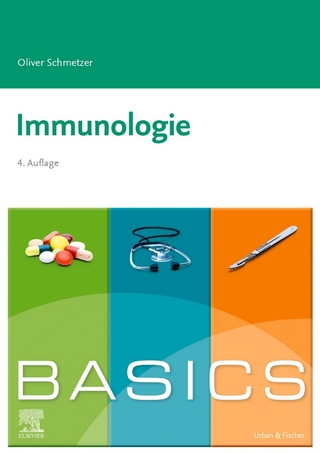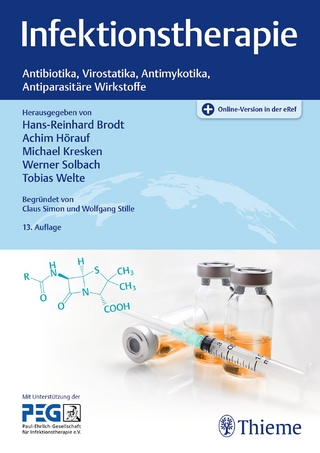
Avian Immunology
Kluwer Academic/Plenum Publishers (Verlag)
978-0-306-32688-2 (ISBN)
- Titel ist leider vergriffen;
keine Neuauflage - Artikel merken
A fascinating possibility is the suggestion that a cell comes into the bursa, is not committed, then can still wander into the thymus. This cell does not appear to have B cell characteris- tics; that is, immunoglobulin is not expressed on its surface.
Lymphoid Development.- Ontogeny.- Ontogeny of Myelopoietic Precursor Cells in the Chicken Embryo.- Ontogeny of Hemopoietic Colony-forming Units in the Chick Embryo Spleen.- Differentiation of the Primary Lymphoid Organs in Avian Embryos: Origin and Homing of the Lymphoid Stem Cells.- Cell Transplantation into Immunodeficient Chicken Embryos - Reconstituting Capacity of Different Embryonic Cells.- Migration Patterns of Avian Embryonic Bone Marrow Cells and Their Differentiation to Functional T and B Cells.- B Cell Maturation.- Unique Aspects of Immunoglobulin Expression During Early B Cell Differentiation in the Chicken.- Analysis of Immunoglobulin Receptors During Antigen-induced Maturation of B Cells.- Lymphocyte Antigens, Receptors, and Factors.- The Production of a Lymphocyte Inhibitory Factor (LyIF) by Bursal and Thymic Lymphocytes.- Detergent Solubilization of B-lymphocyte Immunoglobulin.- Association of Lymphocyte Alloantigen Genotypes with Levels of Immune Responses.- Rosette Formation in Chicks: with Special Reference to QRBC-Rosettes.- Regulation of the Immune Response.- Tolerance.- Protein-induced Neonatal Specific and Non-specific Immunosuppression.- The Role of the Adherent Cell in Antigen-Antibody Complex Induced Immune Unresponsiveness.- Suppressor Cells.- Infectious Agammaglobulinemia: Suppressor T Cells with Specificity for Individual Immunoglobulin Classes.- Further Characterization of the Sensitizing Bursa Cells and of the Target for Suppression in the Transfer of Agammaglobulinemia.- Regulatory Lymphocytes from Anti-y Bursectomized Agammaglobulinemic Chickens.- Regulatory Lymphocytes in T Cell Functions in Chickens.- Inherited Immunodeficiency.- Inherited Iiranunodeficiency in Chickens: A Model for Common Variable Hypogammaglobulinemia in Man?.- Major Histocompatibility Comple.- Structure.- Isolation and Partial Characterization of the Major Histocompatibility Antigen in the Chicken.- Some Recent Recombinants at the B Locus.- The Structure of the Major Histocompatibility Complex of the Chicken.- Immune Response.- Immune Response Genes in Chickens: The Multifarious Responsiveness to (T,G)-A-L.- Immune Response and Adult Mortality Associated with the B Locus in Chickens.- Cell Interactions.- Histocompatibility Requirements for Cellular Cooperation in the Chicken.- Allo-aggression in Chickens: Analysis of the B-Complex by Means of GVH Splenomegaly and by Inhibitory Antibodies.- Cell Transfer Studies with the DK/OR Inbred Chicken Lines.- Disease.- Role of the Major Histocompatibility Complex in Resistance to Marek's Disease: Restriction of the Growth of JMV-MD Tumor Cells in Genetically Resistant Birds.- The Influence of the Major Histocompatibility Locus on Marek's Disease in the Chicken.- Genetic and Cellular Control of Spontaneous Autoimmune Thyroiditis in OS Chickens.- Inbred Lines.- Syngeneic Inbred Lines of Chickens and Their Use in Immunogenetics.- Tumor Immunity.- Induction in B2/B2 Chickens of Immunity to Transplantable Carcinogen-induced Fibrosarcomas Mediated by T-cell Monocyte Cooperation: Role of Delayed Hypersensitivity to Unrelated Antigens.- Role of Tumor Antigen in Vaccine Protection in Marek's Disease.- Immune Responses and Prevention of Lymphoid Leukosis Tumors in Chickens Fed an Androgen Analog.- Immunoglobulins.- Allotypes.- Genetic Polymorphism of Chicken 7S Immunoglobulins.- A Note on Unexpected Chicken 7S Immunoglobulin Allotypes.- Chicken High Molecular Weight Immunoglobulin (IgM) Allotypes: Localization on the Heavy Chains and Proposed Nomenclature.- Binding Site.- Comparison of the Microenvironment of Chicken and Rabbit Antibody Active Sites.
| Erscheint lt. Verlag | 1.9.1977 |
|---|---|
| Zusatzinfo | 57 black & white illustrations, biography |
| Sprache | englisch |
| Gewicht | 903 g |
| Themenwelt | Studium ► Querschnittsbereiche ► Infektiologie / Immunologie |
| Veterinärmedizin ► Großtier | |
| ISBN-10 | 0-306-32688-4 / 0306326884 |
| ISBN-13 | 978-0-306-32688-2 / 9780306326882 |
| Zustand | Neuware |
| Haben Sie eine Frage zum Produkt? |
aus dem Bereich


